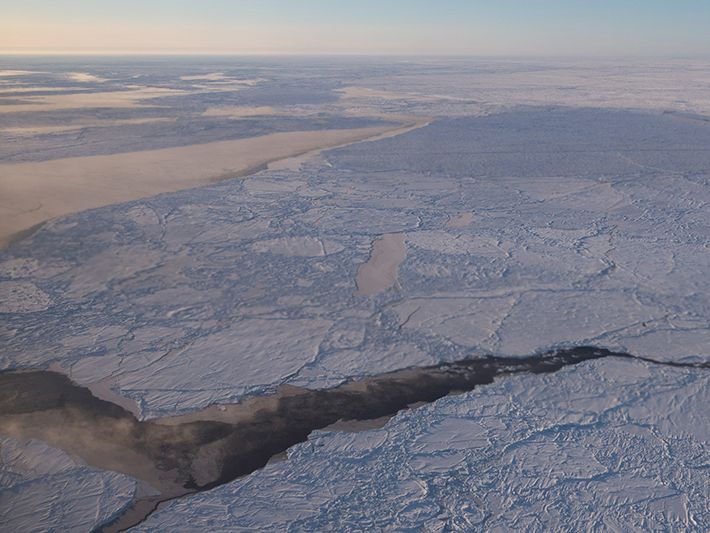Research Page
Sea Ice
Sea ice is major area of cryospheric research and an important component of the strongly coupled polar ocean-ice-air system--a major focus of the U.S. Global Change Research Program. The sea ice group produced, analyzed, and continues to maintain the longest calibrated, sea ice record (over 30 years, extending from ESMR in 1972, through SMMR, to SSM/I, and now to AMSR) from multiple passive microwave satellite sensors. This work has not only defined sea ice variability characteristics including hemispheric, seasonal, and regional trends, but has resulted in the publication of three major Arctic and Antarctic sea ice atlases. In addition to leading sea ice algorithm validation field campaigns, sea ice scientists within the group currently hold major community appointments including the EOS Aqua Project Scientist, and membership on the EOS/Aqua AMSR-E and MODIS, and the ADEOS II AMSR science teams, developing state-of-the-art sea ice algorithms. Future sea ice research will increasingly address the third dimension of sea ice cover - thickness. This will include application of new technologies-ICESat and follow-on, plus coupled radiometry/and SAR scatterometry - to ice thickness measurement, and the linkages between new measurement capabilities for ice thickness and numerical modeling of the relationship between sea ice and climate. Numerical models of ocean-air-ice interactions have aided investigations of the dynamic and thermodynamic processes associated with sea ice variability. Other research, much of it done in collaboration with academic colleagues, investigates the sensitivity of surface air temperatures to polar sea ice conditions, the relationships between low frequency atmospheric variability and sea ice transport, the relationships between interannual to decadal oscillations and hemispheric sea ice and Sea Surface Temperatures, the response of sea ice and ecosystems to warming trends in the Arctic, relationships between sea ice motion and sea surface winds, measurement of marginal ice zone studies with SAR, and the role of Arctic and Antarctic coastal polynyas in deep ocean water production.

